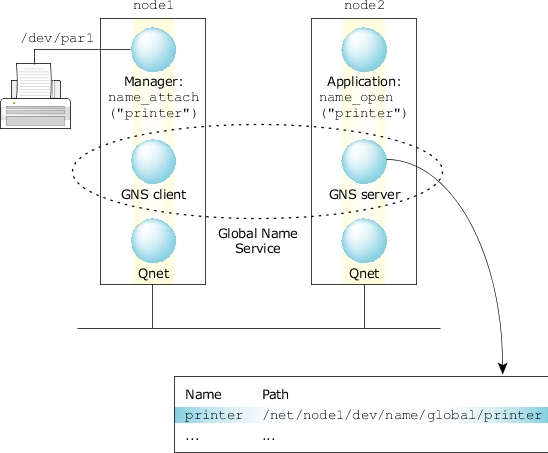The gns utility runs in two different modes: server- and client-mode. A server-mode manager is a central database that stores advertised services, and handles lookup and connect requests. A client-mode manager relays advertisement, lookup, and connect requests between local application and the GNS server(s).
For more information on starting and configuring GNS, see the gns utility in the Utilities Reference.
Here's a simple layout for a GNS client and a GNS server distributed over a network:
 Figure 1. A simple GNS setup.
Figure 1. A simple GNS setup.In this example, there's one gns client and one gns server. As far as an application is concerned, the GNS service is one entity. The client-server relationship is only between gns processes (we'll examine this later). The server GNS process keeps track of the globally registered services, while the client GNS process on the other node relays gns requests for that node to the gns server.
When a client and server application interacts with the GNS service, they use the following APIs:
Server:
- name_attach()
- Register your service with the GNS server.
- name_detach()
- Deregister your service with the GNS server.
Client:
- name_open()
- Open a service via the GNS server.
- name_close()
- Close the service opened with name_open().